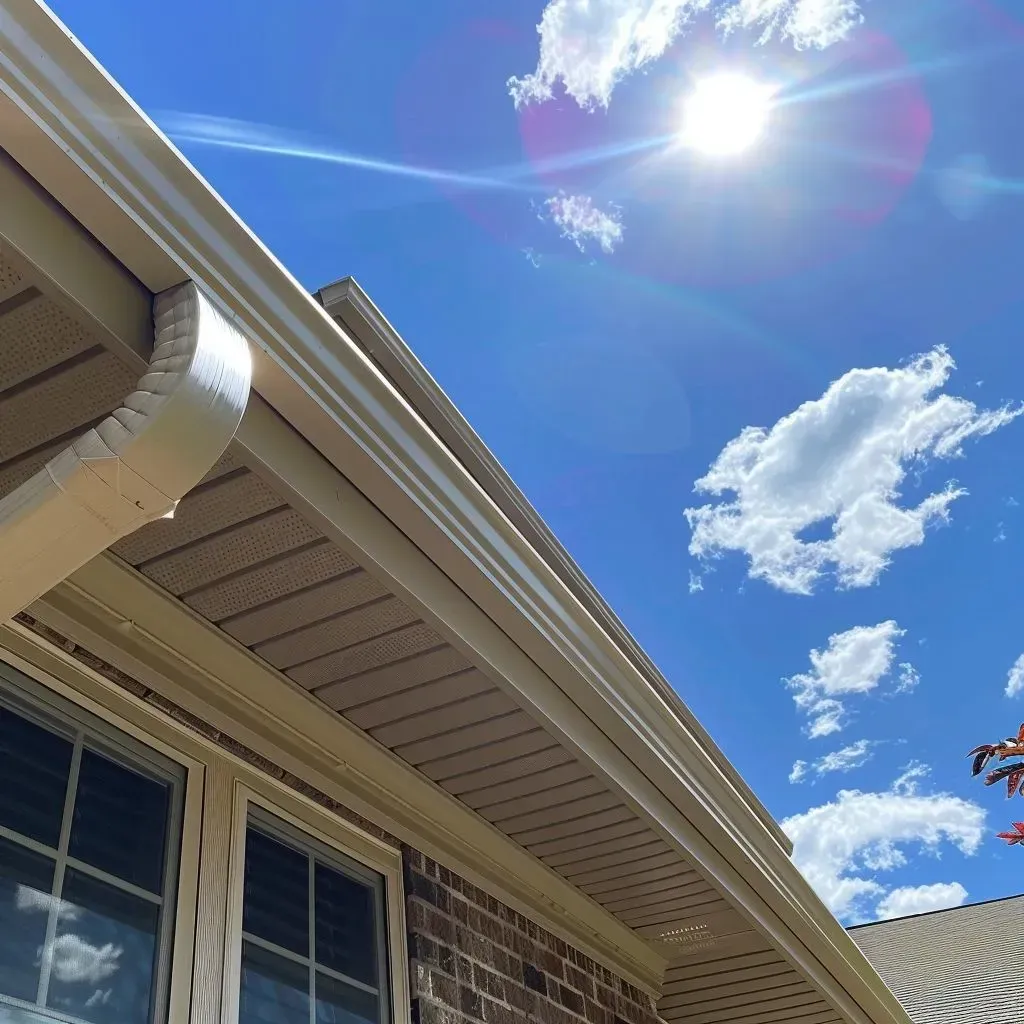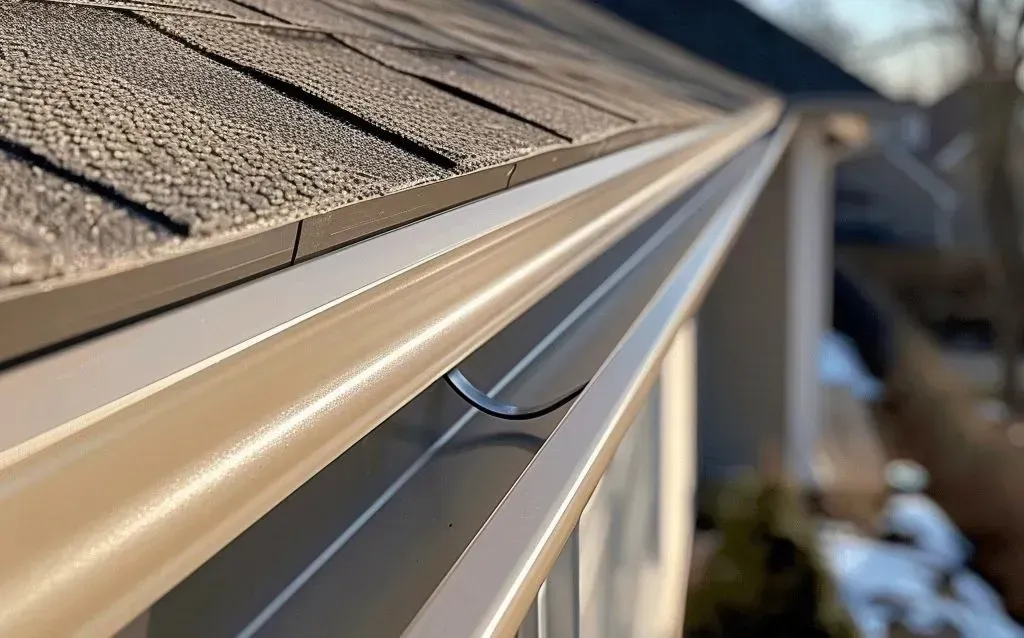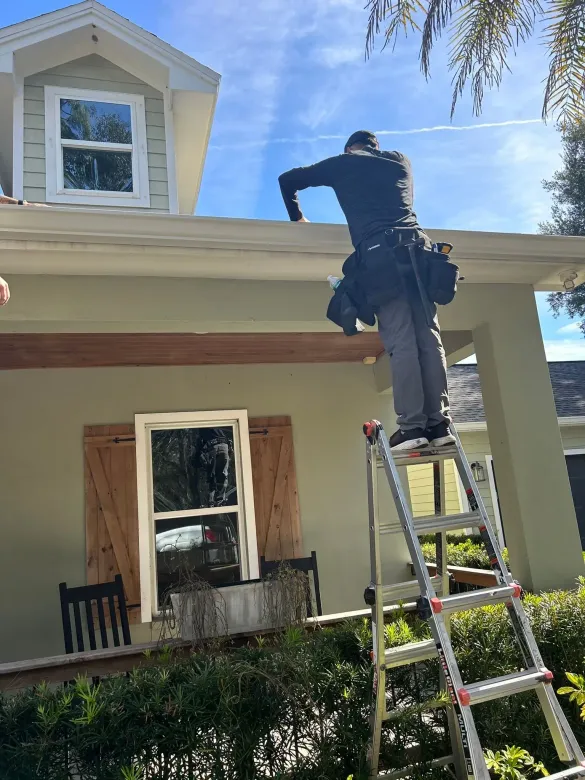Introduction
When it comes to home maintenance, gutters may not be the first thing that springs to mind. However, they play an essential role in protecting your property from water damage. Understanding local regulations on gutter installations in your area is crucial for ensuring that you're compliant with municipal codes while also optimizing the performance of your gutters. Whether you're considering a new installation, a replacement, or simply maintaining your existing system, this comprehensive guide will walk you through everything you need to know.
Understanding Local Regulations on Gutter Installations in Your Area
Local regulations surrounding rain gutters installation can vary widely depending on where you live. These rules are often designed to ensure safety, efficiency, and aesthetic uniformity within neighborhoods. Most municipalities require permits for any significant changes to the exterior of a home—including gutter installations—so it's important to consult local building codes before starting any project.
Why Are Local Regulations Important?
Local regulations serve several purposes:
Safety: Ensuring that installations meet safety standards reduces risks of accidents. Aesthetic Considerations: Many communities have guidelines regarding how homes should look, which can affect gutter design. Water Management: Properly installed gutters can prevent flooding and erosion issues within your community.How to Check Local Regulations
To understand local regulations on gutter installations:
- Visit Local Government Websites: Most municipalities provide detailed information about building codes online. Consult with Professionals: Contact local contractors who specialize in gutter installations; they often have up-to-date knowledge of regulations. Attend Community Meetings: Often, these meetings will cover changes in local policies affecting residential properties.
Types of Gutters and Their Compliance
Different types of gutters have varying compliance requirements based on their materials and designs.

Seamless Gutters vs Regular Gutters
Both seamless and sectional (regular) gutters have their pros and cons:
- Seamless Gutters: Custom-fitted onsite; less prone to leaks; may require specific installation permits. Regular Gutters: Easier to install but more susceptible to leaks; may be subject to stricter code enforcement due to potential water overflow issues.
When should I choose seamless over regular gutters?
If you're looking for durability and minimal maintenance, seamless gutters are generally worth the investment despite potentially higher upfront costs.
Aluminum Gutters Pros and Cons
Aluminum gutters are popular due to their lightweight nature and resistance to rust. However, they do come with some drawbacks:
Pros:
- Lightweight Rust-resistant Available in various colors
Cons:
- Can dent easily May fade over time
Understanding these pros and cons can help you determine if aluminum is the best type of gutters for your home.
How Much Do Seamless Gutters Cost?
The cost of seamless gutters can range from $3 to $25 per linear foot based on material choices and complexity of installation. While this might seem steep initially, consider the long-term savings due to reduced maintenance requirements.
| Material Type | Cost Per Linear Foot | |----------------------|---------------------| | Aluminum | $5 - $15 | | Copper | $15 - $25 | | Vinyl | $3 - $8 |
Are seamless gutters worth it?
Yes! Given their lower maintenance requirements and longer lifespan compared to traditional options, many homeowners find them a worthwhile investment.
Rain Gutters vs Gutter Guards
Many homeowners wonder whether installing gutter guards is necessary when using rain gutters.
Benefits of Gutter Guards
- Reduce clogs caused by leaves and debris Lower cleaning frequency
While they do add an extra layer of protection, it's essential to check if your locality has specific requirements regarding gutter guard installations alongside regular rain gutters.
How To Clean Rain Gutters
Cleaning rain gutters is essential for preventing water damage. Here’s how you can effectively clean them:
Gather Safety Gear: Gloves, goggles, etc. Use a Ladder Safely: Ensure it’s stable before climbing. Clear Debris Manually: Remove leaves or dirt buildup. Flush With Water: Use a garden hose for thorough cleaning.
How often should I clean my gutters?
It’s generally recommended to clean your rain gutters at least twice a year—spring and fall—or more frequently if you have overhanging trees nearby.
How To Maintain Seamless Gutters
Maintaining your seamless gutters involves routine checks for any signs of wear or leaks:
Inspect Monthly: Look for visible damage or sagging areas. Check Downspouts: Ensure they're clear from blockages. Seal Any Leaks Promptly: This prevents further water damage.Taking these steps can significantly extend the lifespan of your seamless aluminum gutters.
Gutter Guard Installation
If you're considering installing gutter guards as part of your overall system, here are key points:
Choose the Right Type: Mesh or solid covers? Measure Accurately: Ensure proper fit over your existing gutters. Follow Manufacturer Instructions Carefully: Each product may vary slightly in installation requirements.Benefits of Seamless Gutters
Seamless gutters offer numerous advantages over traditional options:
- Decreased risk of leaks Custom-fit appearance Reduced maintenance needs
When weighing gutter types for your home, seamless options consistently come out ahead in terms of benefits versus initial investments.
Aluminum Gutters vs Vinyl Gutters
Choosing between aluminum and vinyl involves considering various factors such as durability, cost-effectiveness, climate conditions—and yes—even aesthetics!
Aluminum:
- Pros: More durable than vinyl Resistant to extreme weather conditions Cons: Higher initial cost
Vinyl:
- Pros: Lower cost Lightweight Cons: Less durable than aluminum
Ultimately, understanding the differences helps you make an informed decision based on what’s best for your home environment.
Seamless Aluminum Gutters Lifespan
On average, seamless aluminum gutters can last anywhere from 20 to 30 years with proper care—making them one of the most durable options available today!
Factors Affecting Lifespan
Climate Conditions Quality of Installation Maintenance FrequencyHow Seamless Gutters Are Made
Curious about how those sleek seamless aluminum beauties come into existence? Here’s a brief overview:
Raw Material Preparation Extrusion Process Forming & Cutting gutter installation Finishing Touches (like painting)Understanding this process sheds light on why seamless options typically cost more—they involve specialized materials and manufacturing techniques.
Common Seamless Gutter Problems
Even though seamless systems minimize many common issues associated with traditional designs—trouble can still arise! Some frequent problems include:
1) Clogs from debris buildup 2) Damage from extreme temperature swings 3) Improper installation leading to sagging
By staying aware of these potential pitfalls—and taking preventative measures—you’ll keep your system functioning optimally.
Best Colors for Aluminum Gutters
Choosing the right color for your aluminum gutters isn't just about aesthetics—it affects functionality too!
| Color | Benefits | |-----------------|------------------------------| | White | Blends well with most homes | | Dark Colors | Better at hiding stains | | Light Shades | Reflect heat; good for warm climates |
You should select colors that complement both personal style preferences as well as practical considerations!
How Seamless Gutters Protect Your Home
So why go through all this trouble? Simple! Seamless aluminum systems offer exceptional protection against water intrusion—which could otherwise lead directly into foundations causing major structural damages down the line!
The primary ways they function include: * Redirecting rainwater away from foundations, * Preventing mold growth inside homes, * Minimizing soil erosion around landscaping areas.These benefits underscore why selecting quality materials during installation pays off immensely.
Rain Gutter Sizing Guide
Getting sizing right is critical when installing new systems! A quick overview includes:
1) Measure Roof Area Accuracy, 2) Determine Rainfall Intensity, 3) Calculate Needed Downspout Capacity,
Proper sizing ensures that even heavy rains won’t overwhelm drainage capabilities—keeping everything running smoothly!
Choosing Gutter Styles For Your House
Styles vary widely—from half-rounds suited for traditional homes—to K-style models better aligned with modern architecture choices!
Considerations such as architectural design elements alongside neighborhood standards factor heavily into final decisions!
Rain Gutters And Home Value
Did you know that having functional—and visually appealing—gutter systems could actually enhance property values?
Well-maintained exteriors attract potential buyers while signaling responsible ownership practices!
Investments made towards quality products yield dividends when time comes sell!Aim high by prioritizing both function AND form during renovations/upgrades!
FAQs About Gutter Installations
1) What permits do I need before installing new rain gutters?
Most municipalities require building permits especially if changing styles/materials significantly—consult local guidelines beforehand!
2) How often should I inspect my gutter system?
At least twice yearly inspections are advised; monthly checks during heavy leaf seasons help prevent issues early!
3) Can I install my own rain gutters?
Yes—but proper measurements & tools necessary! If unsure about DIY capabilities hiring professionals minimizes future headaches!
4) What happens if my downspouts clog?
Clogged downspouts redirect excess moisture back into roof areas risking serious structural damages; prompt clearing essential!
5) Should I paint my aluminum gutting system?
Absolutely! Just ensure compatibility with existing finishes & follow prep instructions closely—the right choice boosts curb appeal significantly!
6) Are there eco-friendly options available?
Many manufacturers now produce sustainable alternatives including recycled materials so inquire at stores specializing in green building supplies!


Conclusion
In summary, understanding local regulations on gutter installations in your area is crucial not only for compliance but also ensures optimal performance from whatever systems chosen ultimately reflects commitment toward safeguarding valuable investments made into properties! By following carefully laid-out guidelines presented here alongside professional consultations whenever necessary—you're sure set yourself up success throughout all stages involved—from planning right through final implementation stages successfully!